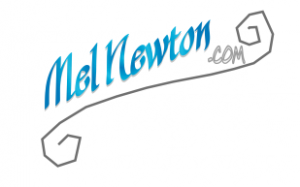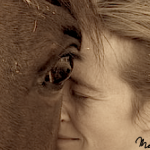Mel’s approach to trimming
| September 10, 2015 | Posted by Melinda under Equine Endurance, Hoof trimming, Most Popular |
I rarely let Farley’s hooves get this long between trims, but it does mean that I can share with you my approach to trimming. Can’t let an opportunity for a suitable blog post go unpunished!
These are Farley’s back hooves and are somewhere 6-8 weeks post trim.
Random caveats
- I’m not a pro trimmer. I don’t trim other people’s horses and I don’t do it for money if I do find myself showing them an odd trick or two.
- I’ve trimmed my own horses for 6 years. I’m mostly self taught through internet and IRL pros. I read all I can and don’t subscribe to one particular “method”. I’ve come to believe that balance, looking at the big picture, and paying attention to how the hoof adapts to what I’m doing or not doing are the most important things.
- I live in a super dry climate, but without a lot of sand. What kind of climate your horse lives in MATTERS for what kind of challenges the hoof will present.
- It’s definitely been a journey and if you are just starting out you CAN start off simply. I started out with just a rasp, cleaning up between the pro visits who came every 6-9 weeks to trim. After a couple of months I bought some hoof knives. Even though I use other tools for the trims in this post, with some sweat and time you CAN do the exact same trim I am going to show you just using knives and a rasp. It was YEARS before I trusted my eye and knowledge base enough to use nippers and a grinder on my horse’s feet. I only refreshed mustang rolls for the first couple of months, only started trimming frogs this year. Do what you are comfortable with and get help with the rest.
- This isn’t a “special-get-it-completely-right” trim. This is a “I’m 8 months pregnant, it’s 100 degrees but those hooves HAVE to get done and I still want the energy to play with her afterwards” type trim. Think of it as my “every day trim”. I want it correct, I want it balanced – but I’m not going to fuss over it until it’s perfect like I might before an endurance ride or before gluing on boots. I’m going to be looking at this trim every 1-2 weeks and touching up as necessary so I’ll usually error on the side of leaving too much rather than too little and adjust based on what I see the hoof doing post trim.
Let’s get started.
1. Look at the hoof and clean with hoof pick

As ugly as this hoof is, it’s *just* long. Not a lot of flare, no cracks, no underrun heels. This is worst case scenario on a best case foot, which makes it a nice “normal” trim to demonstrate. I can’t even tell you how much I look forward to ripping massive chunks of sole and bar out like wha’s pictured here…at least as satisfying as picking dried glue off my fingers.
2. Remove obvious chunks of sole, focusing around bars and heels

The chunks of retained sole and bar removed. I did this with nippers. She does a good job of shedding sole further forward on the foot and after scraping it with my nippers, no other chunks were loosened and ready to come off.
3. Remove hoof wall and bars so that is level with the sole

Walls and heels trimmed to sole level with a pair of nippers. The heel on the left hand side of the picture is abnormal because of a previous injury before I owned her. I completely ignore it when I trim and just make sure the heels are level and keep in mind that side likes to retain sole and tries to lie to me on what height the heel should be. It does create a bit of an optical illusion in pictures that the heel is higher then it is. I try to get the wall as close to final height with the nippers as I can so that I have the least amount of work possible in the next step of balancing and finishing the hoof wall by either rasping (too much hoof = lots of sweat) or using an angle grinder (creates heat if I have to remove a lot of hoof).
4. Clean up other areas of the hoof as necessary.

Frog trimmed up with nippers. Not always necessary, but take a look at the previous pics and I think you will agree that it needed to be done! There’s stiill plenty of frog there. Trimming the frog is something I’ve *just* become comfortable with.
5. Grind/rasp hoof so that it is balanced and even. Pay special attention to heel height.

Hoof leveled/balanced and finished with the angle grinder. Trick is to keep the grinder moving and not spend more then a couple seconds on any one spot. Move on and come back – the grinder produces a lot of heat which is not good if you don’t keep moving. I find that having a hoof stand helps TREMENDOUSLY while using the grinder. My goals during this step is balancing the hoof medially and laterally (side to side), making sure the heels are level and trimmed short enough, and the wall follows the sole. After that, I start my mustang roll with the grinder from the bottom. I forgot I was taking pictures and took this picture after starting the mustang roll on the side of the hoof that is on the left in this picture.
6. 45 degree mustang roll from bottom. Extra attention at the toe and getting it back far enough if necessary.

Mustang roll done from the bottom, will be finished with a rasp from the top. In the past I was a lot more worried about the white line and felt like if the white line was crumbly – like what you see on the bottom left hand side in this picture – that it meant I the hoof needed to be shorter and/or there needed to be an aggressive mustang roll through the white line to the sole etc. Now, unless I can find a flare to fix when I rasp from the top I dont’ worry about it as long as the foot overall looks healthy, is balanced etc. Often it does mean that there is some retained sole that needs to come out and the hoof could go a bit shorter…..but micromanaging the hoof didn’t seem to do any better job at keeping my horses sound and happy then just providing an overall balanced trim so I stopped worrying about areas that looked like that and focused on the bigger picture.
7. (not shown) Finish mustang roll from the top, address flares. Back up toe from the top if necessary.
The hoof was rasped from the top to finish the mustang roll and address flares (very minimal, just a touch around the back of the quarters near the heel). However the sand/gravel I’m working in hid most of the mustang roll so I didn’t bother with pictures.
8. (not shown) Reevaluate hoof from bottom, on the ground, and during movement for balance.
9. Repeat!
After the work is done it’s time for a bit of pleasure driving!!!!! (which is perfect for me to stare at her feet and obssess with breakover and balance 🙂
Other notes…
Seasonal Differences
In the winter time I tend to use hoof knives and a rasp with a little bit of nipper. In the summer time (ie until it rains, and what I’m doing right now in these pictures) I use a LOT of nipper and utilize an angle grinder, with a tiny big of rasp (mostly to take flares down from the top and finish my mustang roll).
PS
Just have to show off the fact that I trimmed today in long pants AND closed toed shoes AND chaps. Must be some sort of safety record.
Updates to this post

















“Safety record ” bahaha. I feel the same way. I’m in shorts and crocs so much of the time now.
[…] The trim […]
Nice trim, nice driving pic! 🙂
A trick I learned from a farrier at Davis that did a really nice job, is that if I’m having trouble finding what I need to do to a hoof I’ll actually start from the top and shape and rasp it down from the top first, then flip it over and see what that did to my wall, sole, and my white line etc. Sometimes I can tell what I need to do with that toe by doing this.
I look at a couple of things. First of all the overall confirmation of the hoof. On both of her hind feet she has a tendancy to grow more heel and the toe actually ends up pretty short. So I didn’t back up the toe at all. I did a Mustang roll to the waterline which is halfway through the wall before you get to the White line. On a hoof that looks like it has a long toe And from the bottom I can see that the white line is stretched, I would back toe up all the way to the white line in my Mustang roll. I would then reevaluate my trim in less than a week to see How the sole and toe responded.
Thank you for this post!!! As someone new to self trimming it is really helpful to see how others tackle the job. I feel like I have a good handle (so far until things change anyway) on bringing the heels and bar down and the mustang roll, but I am always slightly clueless on how far to really bring the toe back. Some website show bringing it all the way to the white line and others leave it much longer. How do you determine the length of toe?